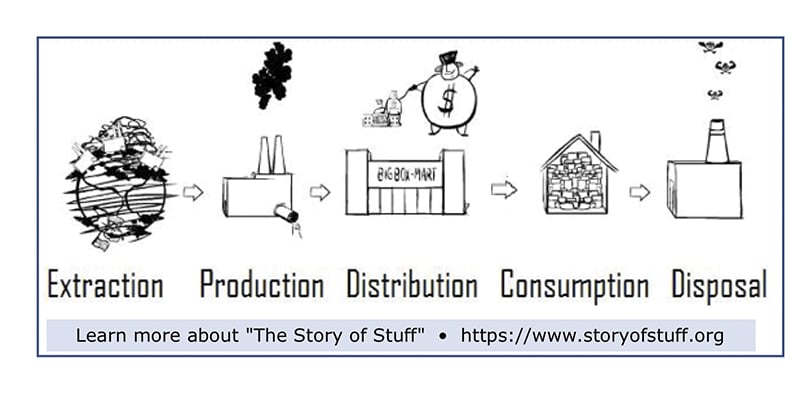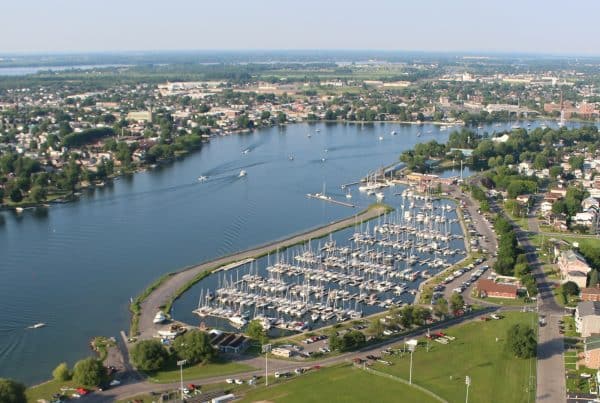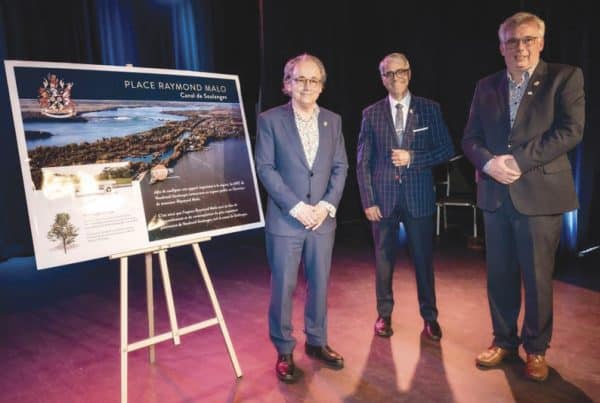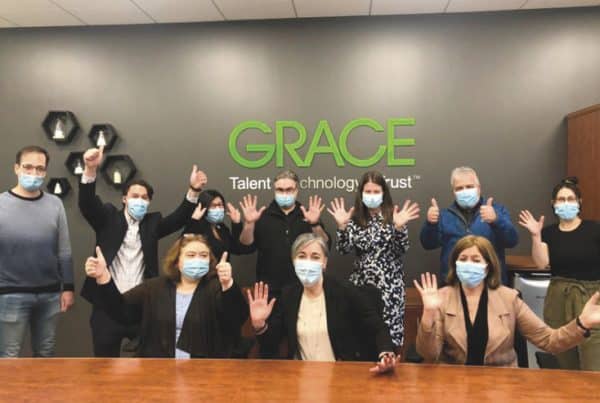“How much is enough?” At a time when the world is justifiably alarmed by the rising climate crisis and “the market” is pushing for ever increasing growth, this is a critical question. It is easier than ever to buy stuff without leaving home, and we are doing it in unprecedented volume.
In my lifetime, we have gone from being citizens to being consumers, constantly bombarded by advertising urging us to buy. We furnish our homes, our decks, our patios. We buy second cars, second homes, swimming pools, RVs. We buy and throw away immense amounts of ‘stuff’, yet we are no happier because of it. In North America, we have acquired so much stuff, that the demand for storage lockers has exploded. And the problems created by all that stuff goes beyond packaging and waste.
From extraction to production to transportation, our supply lines encircle the globe. We import food and goods from factories and farms in China, Thailand, India, South America, New Zealand, Mexico… And with the constant demand, we now have so much stuff in shipping containers all over the world that the entire system is congested.
Advertising and market forces have appropriated holidays such as Christmas and Easter, and turned them into buying frenzies. And – out of thin air – they have created others such as ‘Black Friday’ and ‘Cyber Monday’ to stimulate more consumption. As well, there are millions of Russians, Chinese and Indians who aspire to live as we do – pushing the planet beyond sustainable limits.
What can we do about it?
As a society, we need to shift our focus from Gross Domestic Product (GDP) and quarterly profits to quality of life. This requires a ‘top-down AND bottom-up’ approach. Bold leadership – yes! But as individuals, we need to become mindful of the choices we make. We need to talk about consumption with our kids. We need better-quality, affordable items designed to last, while repurposing, repairing and recycling everything else.A counterpoint to the consumer culture is cultivating communities which are more inclusive, more connected, and more resilient. When we produce and consume locally, it lowers the cost of transportation, reduces waste and helps local economies. We need places and opportunities for neighbours and people of all ages to meet and engage with one another.
We need to share. An emerging example (in Ottawa, Toronto & elsewhere) are tool libraries. Tool libraries allow members to check out or borrow tools and equipment, commonly free of charge as a form of community sharing. Not everybody needs to buy a power washer or circular saw.
It’s time to switch from “more” to “better”. And perhaps it’s time we learn to live beneath our means. Don Rosenbaum is a retired educator, and a member of the MWCN Board of Directors.









